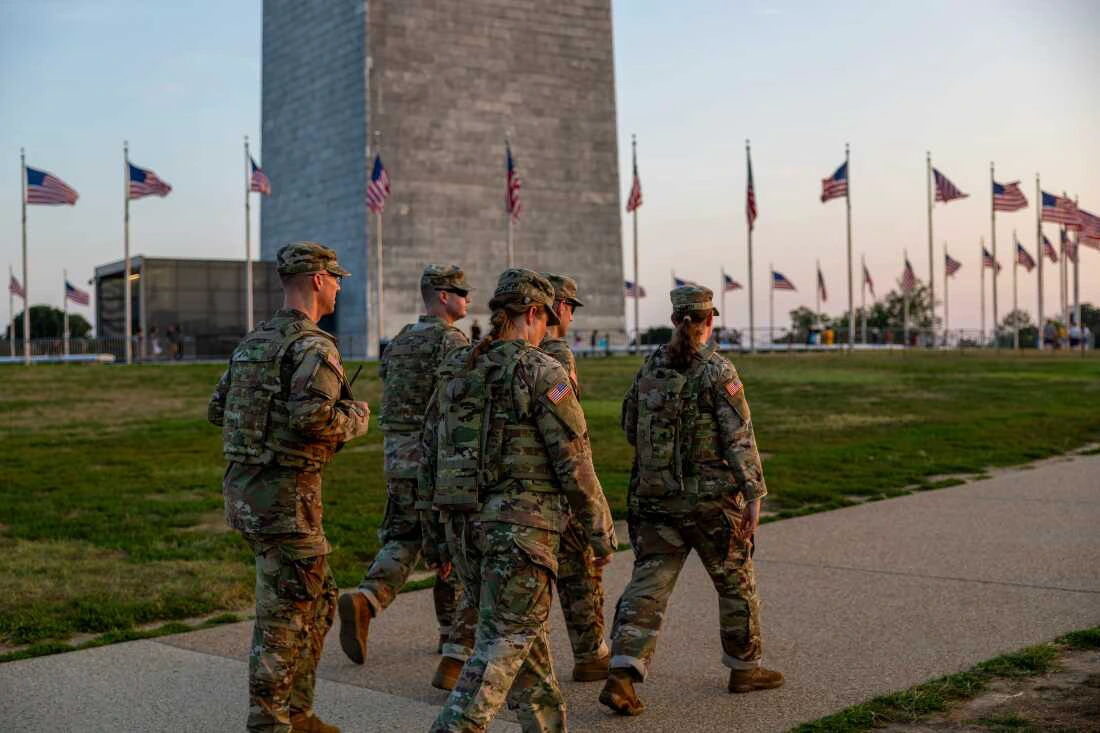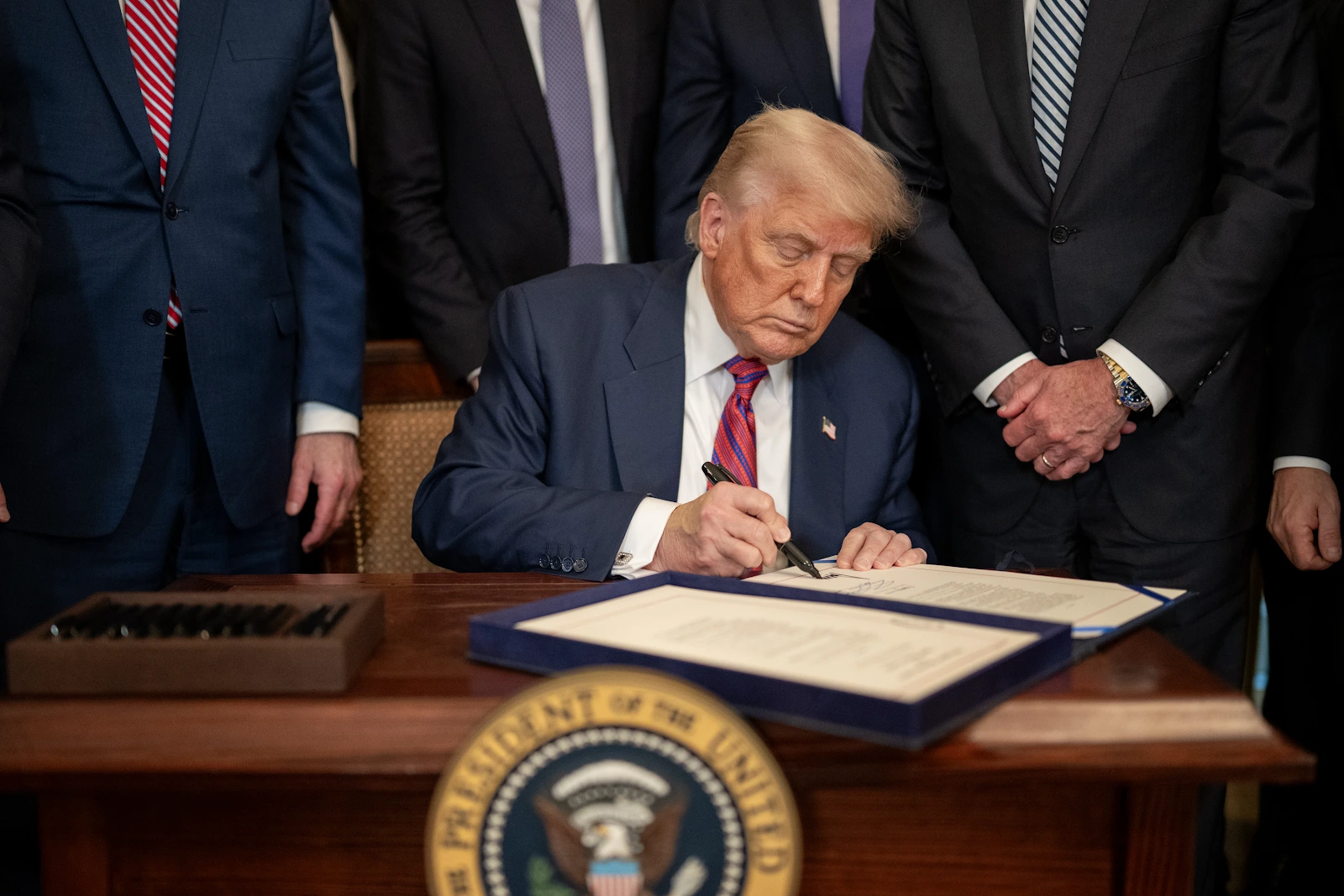On Monday, August 12th, the US President Donald Trump told reporters that he would deploy the D.C. National Guard to the capital, Washington D.C, saying the aim was to make the city safe again. Although the President has the authority to send the federal military to the streets in the district, previous instances of it happening were politically and emergency-wise of a different sort.
What is the National Guard?
The National Guard is a component of the United States’ military. although it is distinct from the Regular Military, which is usually used for US international military operations. The National Guard, on the other hand, is primarily used for domestic purposes such as disaster relief, law enforcement, border security or election support. In more recent times though, some of the Guards have also been sent to various missions abroad.
Additionally, contrary to the Regular Military, the National Guard is not commanded by the president and his government in the first place. Who is in charge are the governors of the respective states or territories, with each of them having their own Guard composed of part-time guardsmen who are usually responding on the state level.
However, because the United States is a federation of states with the president as the commander and chief, the president has the authority to federalize the guard in certain cases. He has the power to also order its deployment in a particular state or a city, but this usually happens after a consultation with the state’s governor or the city’s mayor. Yet this has been breached in June recently, when the President Donald Trump bypassed the Californian governor Gavin Newsom and deployed the National Guard troops in Los Angeles to combat immigration protests in Los Angeles.
Washington D.C., nevertheless, is a different case, given the fact that it is not a state but rather a federally controlled district which does not have a governor. Therefore, apart from the mayor, the White House has control over the city, although not unilateral.
The legality and history of the National Guard deployments
Thus, President Trump does not act unlawfully by deploying the National Guard in DC. There have been multiple instances of this in the past.
After the assasination of the civil rights advocate the Rev. Martin Luther King Jr. in 1968, a nation-wide, violent riots broke out in many cities, including in Washington D.C. The deployment of the Guards by the then-President Lyndon B. Johnson, on the DC’s mayor’s demand, actually helped calm the situation down after a few days, as the Guardsmen worked in coordination with the city’s police force.
In more recent times, President Trump at the end of his first term in office (2017 - 2021) has mobilized the National Guard in the capitol to combat the surge of the Black Lives Matter protests following the death of George Floyd in the hand of a police officer in Minneapolis in the spring of 2020. Given the sensitive and racial aspect of this case, and the President being seen as not being on the side of the protesters, the deployment became controversial - Even though, again, the Guardsmen did, together with the police, combat the situation, and the deployment was within the authority of the president.
What, however, distinguishes these two previous instances from the current one are the political and emergency aspects of it.
The political and emergency aspects
The National Guard was also sent to DC after the January 6th, 2021 riots on the US Capitol at the end of Trump’s first term in office. The then-administration was accused by the Democrats and other opponents for not deploying the troops soon enough or even asking why there was no security guaranteed by the Guardsmen on that occasion. In that situation, it was politically logical for the Republican administration to hesitate with sending Guards to the city, as it would make the situation seem serious, which was not politically convenient for them.
This politicization of the county’s security capabilities plays out today as well. President Trump justifies the deployment by claims over high violence, crime and homicide rates, dirty streets and overwhelming homelessness in Washington D.C., which led him to declare a crime emergency in the city. The White House called the arrival of the troops to the city a “Liberation Day for DC”.
In comparison, however, to the previous two instances of the Guard’s deployment in DC, in 1968 and 2020, the city is not in an emergency that would require this kind of action. Street crime there is not significantly higher than in other cities across the country - in fact, it is not even in the Top 10 cities in the United States in total crime per 100,000 residents. This suggests the crime in DC could be dealt with in cooperation with the mayor and the police department, as is the case even in cities with the highest crime rates.
Perhaps more crucially, Trump argues that the main purpose of the action is “to protect public servants, citizens, and tourists, and ensure safe functioning of the Federal government”. By framing it as a security precaution, they give no room to the opponents, mainly to the Democrats, to oppose it - any critics can quickly be accused of not caring about protecting the citizens and not wanting to make the city a better place to live in.
Again, the exaggeration of the dirt in the city, including the issue of homelessness in the city, are issues that might be much more alarming in other cities.
It is also important to ask why might the Trump administration focus on this issue now. Before he announced his aim to “make DC safe again”, the attention was largely on Trump’s friendship with the sexual offender Jeffrey Epstein and the so-called Epstein files. These documents are in the possession of the White House and likely contain some content damaging to the President. Moreover, during his presidential campaign last year, he claimed he would release the files, even though at that time he did not know what was in them. After Trump won and read the content, he likely concluded it would be better for him to not release them and switch the attention to other matters. For example the safety and cleanliness in the capital.

On the streets of DC
Washington D.C. residents will likely each have a bit different experience of living in a city with the National Guard present on the streets. The troops are not around the whole city as of now,and there have been reports that the Guardsmen have been concentrated mainly around the National Mall and other well-known tourist spots.
A pedestrian on the street would likely be able to differentiate them from regular police officers, mainly due to their military-style uniforms. They may even be heavily armed.
Public opinion on the issue is divided according to the political lines. The right-leaning parts of the public largely endorse the new policies, whereas the left-leaning residents, who are in a significant majority in the city, do object. The fact of the matter is, the National Guard’s presence can make living in the capital safer and can make people feel protected in the subway or on the streets after dark. On the other hand, negative impacts of the deployment on regular residents is minimal.
The security threats to DC residents
The current deployment of the National Guard, a primarily domestically
used military force, ordered by President Donald Trump is legal and not
necessarily unprecedented.
However, in the previous instances, the security threats to DC residents,
tourists and government officials were probably much higher than they are
in the present days. Additionally, there are cities across the country
with higher crime rates, which hints at the political and strategic
motivations behind it.
Trump is using the issue of safety in the city for his political and personal reasons, which is dangerous and may be troubling for the future of a well-functioning democratic system.
“Making DC safe again” has more thought-through intervention behind it, and not an innocent one.
 Renata Pernegrova
Renata Pernegrova